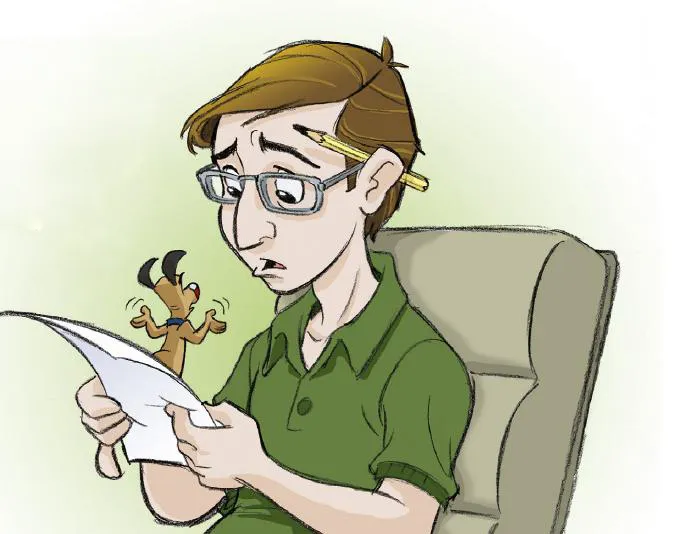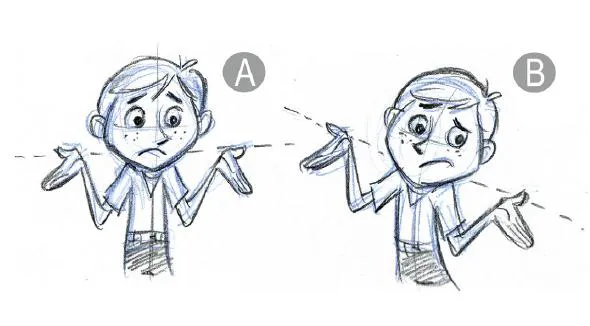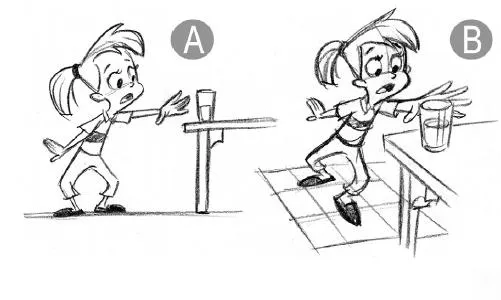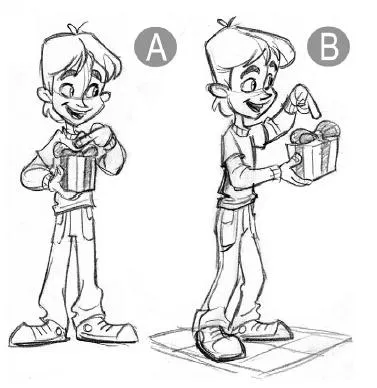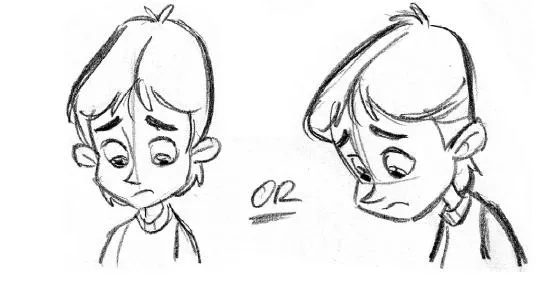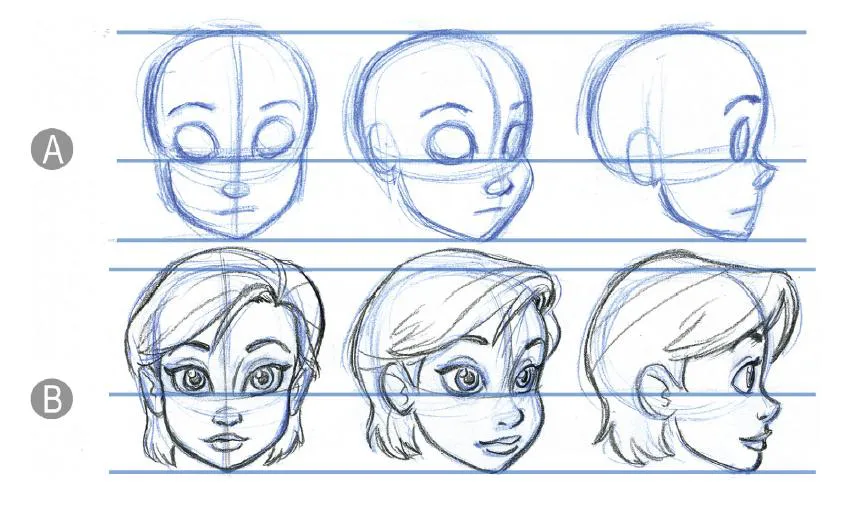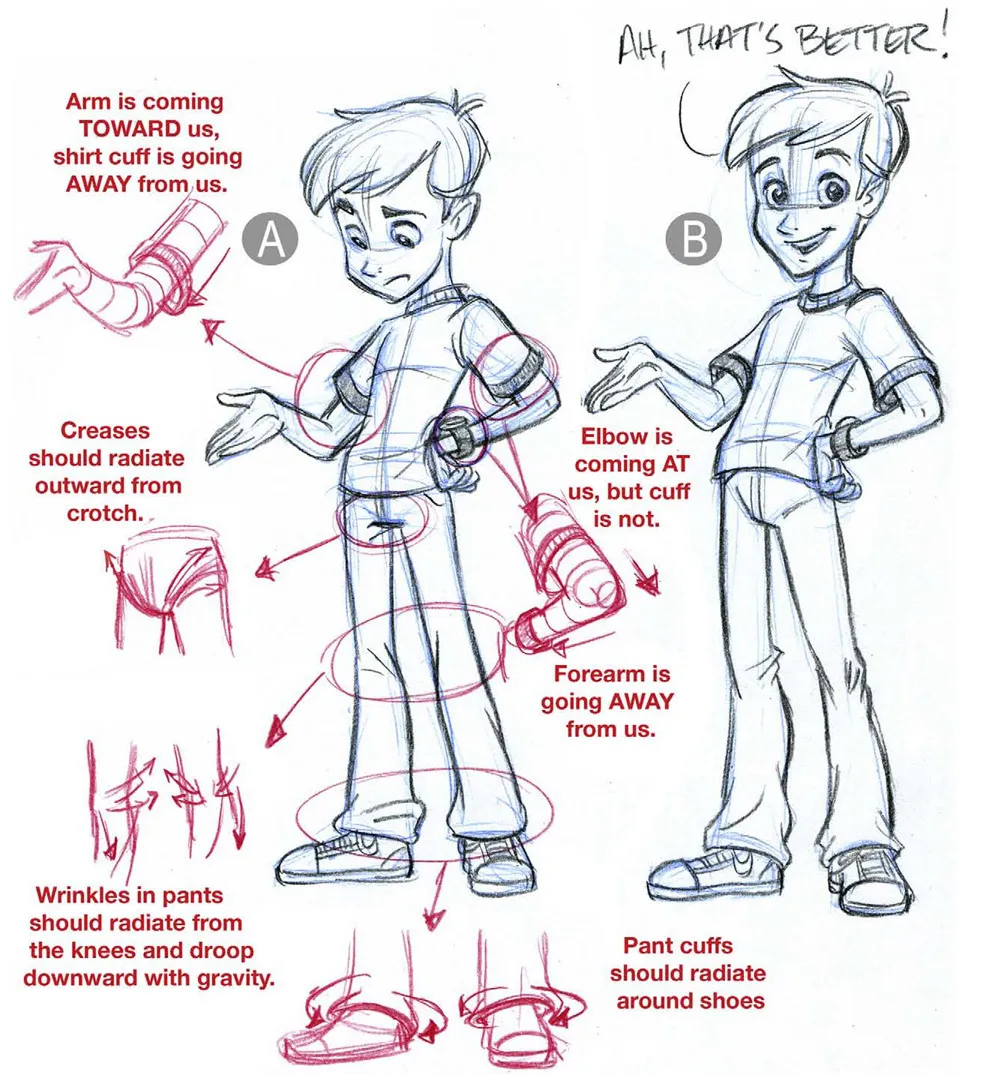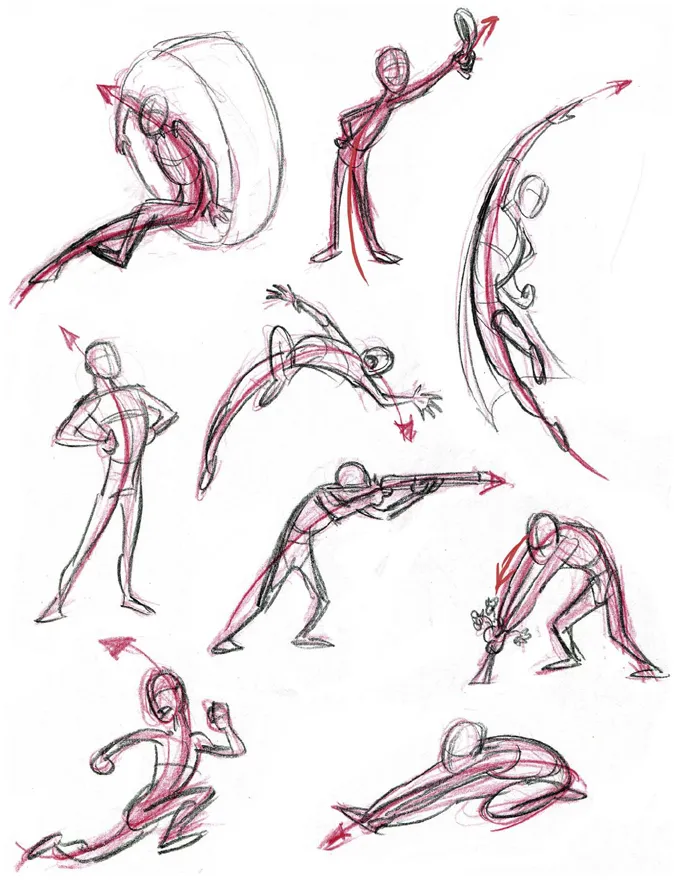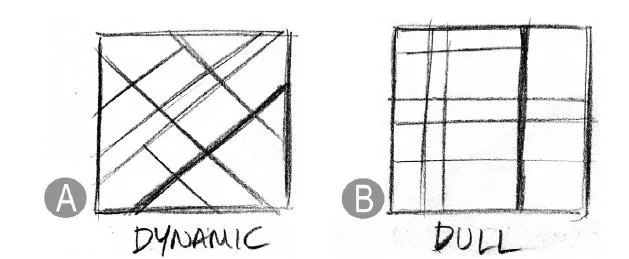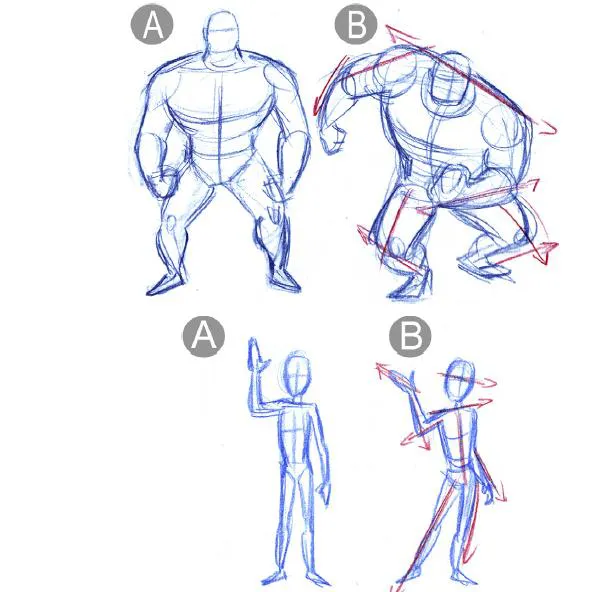![]()
CHAPTER 1
NOW WHAT?
Drawing Basics for
Posing and Expressions
NOW WHAT? 1
As I mentioned in the preface, this book starts with the conceit that you have a character or characters already designed—so now what do you do with them? You may want to use them in a comic book, a video game, an animated film, a TV show, or a children’s book. How you use them is important, but what you are trying to communicate with them is what is most important. Drawing style does not matter concerning the instruction in this book. How you approach showcasing your characters is what matters.
If I had to write a “mission statement” for this book it would be this: Character Mentor is a book that communicates to artists of all styles and within all industries the importance of using posing, expressions, and staging to bring your characters to life. I believe that there is a “missing link” in our development as artists from our early beginnings of enjoying to draw to becoming a professional, working artist. My hope is that this book can be used as a tool to help bridge that gap.
Let’s start with some general posing and expression basics and tips. These are some good ground rules and drawing pointers that we will be putting to use in later chapterrs. Unlike other sections of this book, these notes do not necessarily rely on a character’s specific personality. They are lessons that can be applied to all characters.
TWINNING
If your character’s arms, legs, or even the grin of its mouth is identical in position with its partner, we call this “twinning.” Not that I have anything against twins (in fact, I am a twin, and I have twin girls), but “twinning” in your character’s pose does not create a strong pose. Try to avoid this effect whenever possible. It makes for a dull, average pose and is generally considered a weak design. Offset your pose whenever possible.
A good example of twinning can be seen in the traditional “Ta-Da!” pose (see Figure A). Even in a flat, straight-on angle like this, a slight tilt to the head, bringing one of the arms up some, and placing the character’s weight more on one leg than the other will break up the symmetry in the pose (Figure B). Same emotion in the pose, more interesting design.
A subtler example of twinning is seen in an “I don’t know” shrug pose. In this example, twinning is acceptable because it does communicate this very recognizable pose (Figure A). But, a slight tilt to the head and minor arm/hand adjustments can make the pose a bit more interesting while still communicating the idea (Figure B).
USING PERSPECTIVE TO CREATE DEPTH
A common practice of beginning artists is to leave perspective out of their characters’ poses. It complicates the drawing, thus making it harder to create. Adding some depth to your pose will improve the pose immensely. Keep practicing your perspective in your character drawings and backgrounds; it will pay off! If your character is standing on the ground, rough in a ground plane that has some perspective to it rather than having a flat line for your character to stand on.
Adding some perspective/depth will:
- Help you avoid twinning in your character’s stance. Even if your character has some symmetry to its pose, adding depth to its stance will automatically take away the twinning problem because of the differences in the sizes of the shapes. In Figure B, the foreground eye, ear, arm, and leg are bigger than the left side of the drawing which helps the drawing appear less symmetrical.
- Make your poses more dynamic. Note that the more dynamic angle in Figure B immediately gives more drama to the scene of the little girl reaching for the glass.
- Make poses more clear and give them a better silhouette. A good way to check your character’s silhouette value is to shade it in on the back of your paper. Figure A, if shaded in would be very unclear what the boy was pointing at- or even that he was pointing at all! The pose in Figure B, clears that guesswork up!
- Help strengthen expressions and emotions. The slump in the shoulders and the head hanging down can be seen clearer in the quarter-front view on the right than the dead-on front view on the left.
Remember that you have created your characters so they can be broken down into simple, basic shapes. This step will allow you to draw your character from different angles and perspectives. Think of the basic shapes of the head, eyes, lips, and nose of the face. Place them in the perspective within the circular shape of the head, remembering that shapes flatten as they turn away from the center (Figure A). This simplified drawing is the key to correctly replicating your characters from different angles. Once you have roughed out those basic shapes, you can then start adding details and refining the shapes of your character (Figure B).
CLOTHING: DEPTH KILLERS?
We have all done it before: you have worked hard creating your character, putting him or her into a good pose, giving the character just the right expression, and then you quickly sketch in his or her clothing so that you can be done with your masterpiece. Be careful, as there are many ways you can hurt a good drawing by thoughtlessly throwing clothes on over it. Keep in mind that your character has depth and dimension. As you draw in the clothing on top of your character, consider how the cuffs will curve around the arms or legs — are they convex or concave circles? Are the wrinkles in the shirt or pants moving around the shape of the body or through it? The figure below shows the same pose drawn in two different ways: version A has perspective problems to the clothing; version B works with the perspective of the body. You’ve been warned: watch out for these depth killers!
USING THE CORE
A common mistake when posing characters is to have the arms, legs, and head do all the communication of the pose while the midsection (pelvis to torso) is straight as a board. A straight midsection or core can make your poses feel stiff. Also, you can miss out on a stronger way to communicate the emotions of the pose.
LINE OF ACTION
The imaginary line that can be drawn through your character’s pose from feet to head (or through the arms, depending on the pose) is called the “line of action.” In a dynamic pose, like a character punching another character (Figure A), the line of action is strong and clear if the poses are pushed. Straight, boring poses don’t have a dynamic line of action, as seen in this “fight scene” in Figure B.
Additionally, there is a natural “flow” within the anatomy of your character when you have a strong line of action. It will also give your characters a sense of power and dynamics.
DRAMA IS NOT VERTICAL
To go along with the idea of a line of action in your character’s poses, remember to draw elements within your pose at angles to create a more dynamic pose. A shape that is at a 45-degree angle, for example (Figure A) is more visually dynamic than a shape that is at a 90-degree angle (Figure B).
It’s too easy to draw a straight up and down pose for your character. Try and push yourself to add angles into the drawing whenever possible. You will see this in superhero comic books in particular. Here are some stick figure–style poses with some of the straights taken out and replaced with some angles. More dynamic?
STEP-BY- STEP:CREATING A POSE FROM START TO FINISHED COLOR
This might be a good place to stop for a moment and go through a pose-based illustration from start to finish to see how I would approach it. I always learn from seeing other artists’ processes, and I think you might get something out of this that you can apply throughout this book.
I gave myself a simple assignment to create a spot illustration of a woman jumping out of the way of something — possibly reacting to someone throwing a firecracker at her. My goal is to create a pose that expresses a powerful leap but also has a strong sen...

